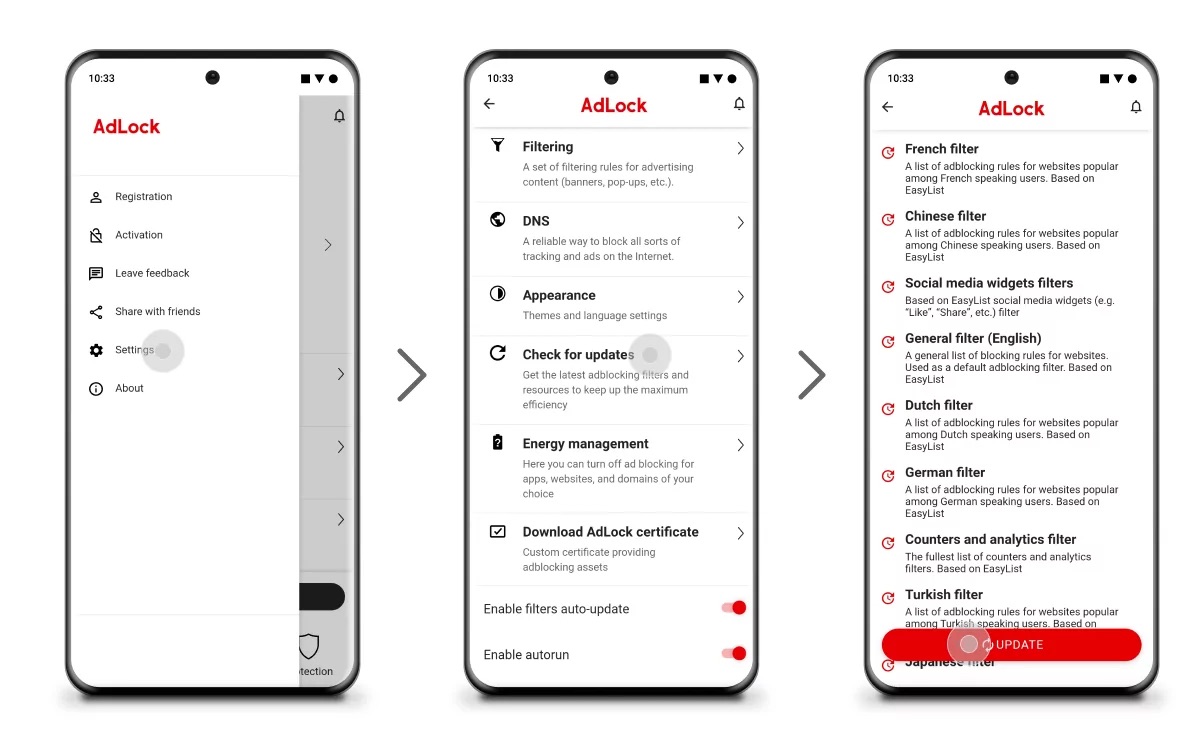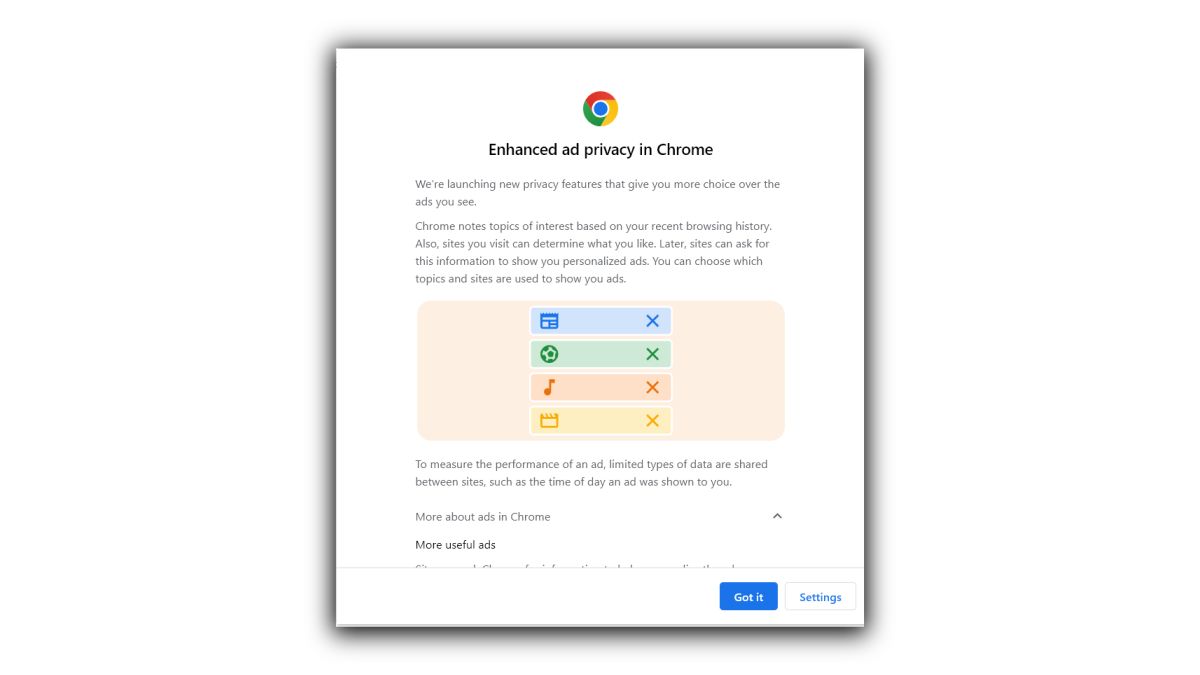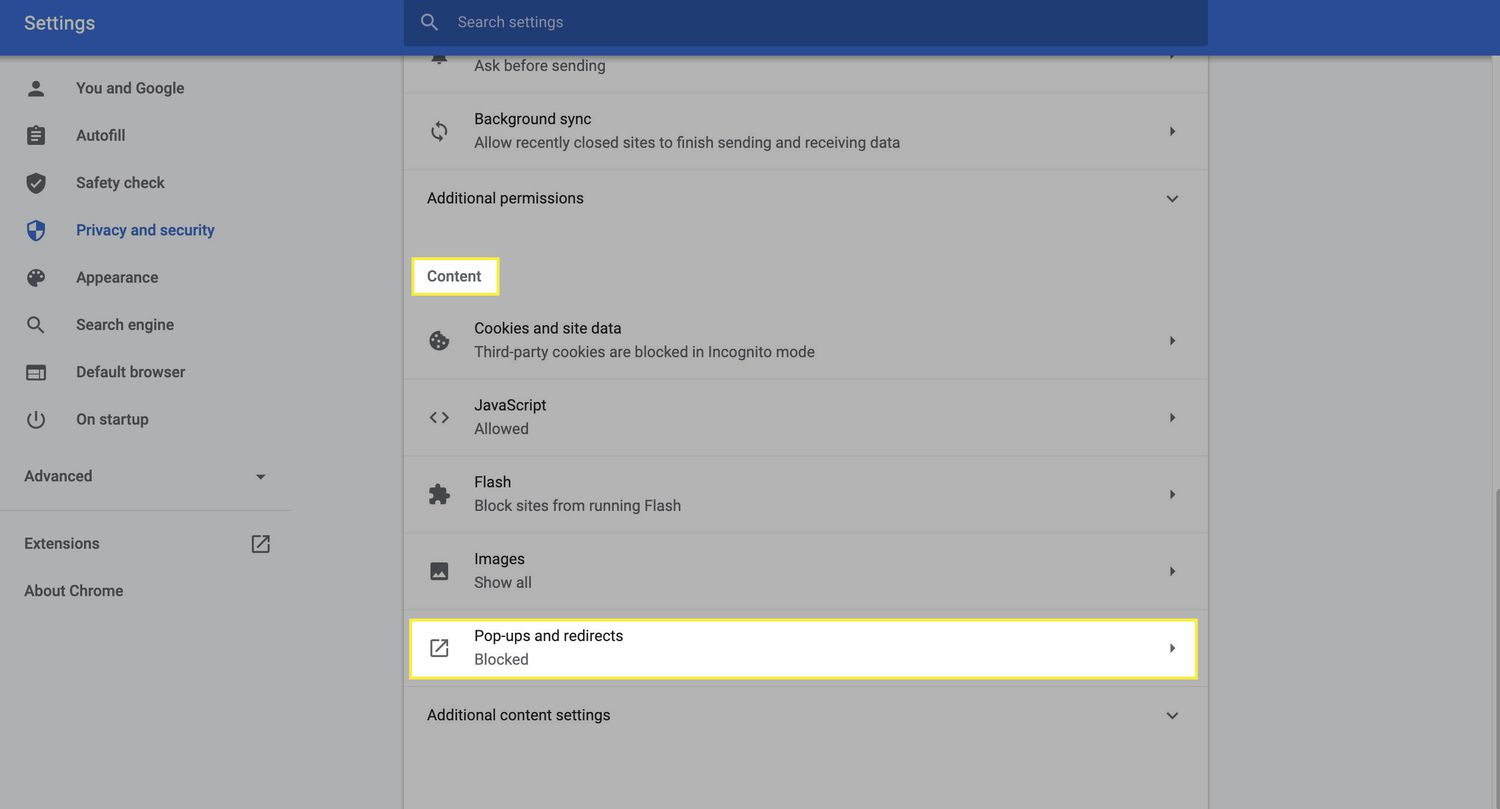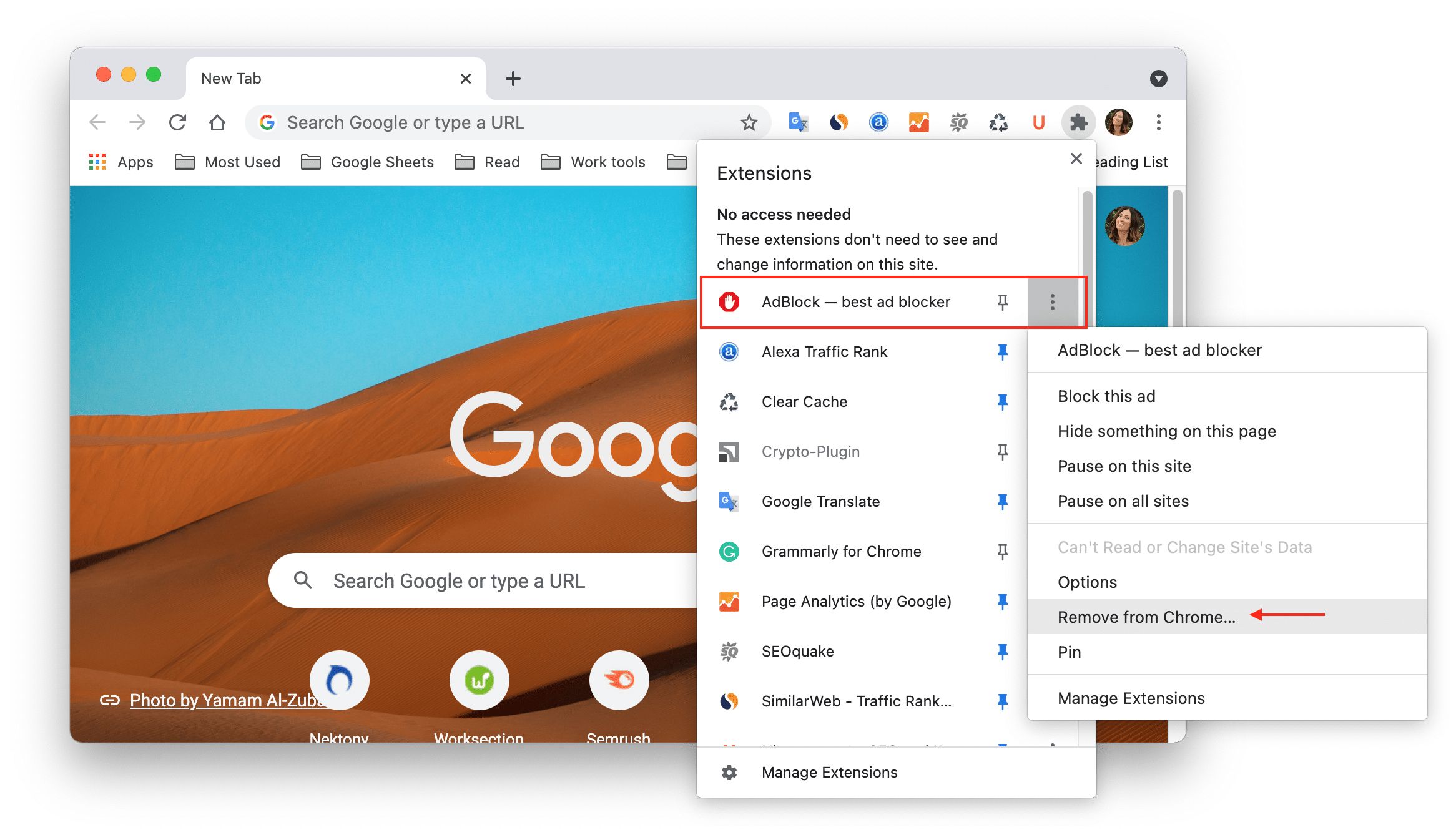Introduction
In today's digital age, web browsing has become an integral part of our daily lives. As we navigate the vast online landscape, we encounter a myriad of advertisements that vie for our attention. While some of these ads may be relevant and useful, others can be intrusive, disruptive, and even malicious. This is where ad-blocking extensions come into play, offering users the ability to control their browsing experience by filtering out unwanted ads.
One of the most popular web browsers, Google Chrome, provides users with the option to install ad-blocking extensions to enhance their online privacy and reduce distractions. These extensions work by preventing ads from loading on web pages, thereby creating a cleaner and more streamlined browsing environment.
However, there are instances where users may wish to disable their ad-blocking extensions, either to support their favorite websites through ad revenue or to access content that is restricted when ad blockers are active. In this article, we will delve into the intricacies of ad-blocking on Chrome, explore the risks and benefits of disabling ad blockers, and provide step-by-step guidance on how to disable ad-blocking extensions. Additionally, we will discuss alternative solutions for managing ads on Chrome, empowering users to make informed decisions about their browsing preferences.
As we embark on this journey, it's important to recognize the evolving nature of online advertising and the impact it has on the browsing experience. By understanding the nuances of ad-blocking on Chrome, users can navigate the digital realm with greater control and awareness, ultimately shaping a more personalized and enjoyable online ecosystem.
Understanding Adblock on Chrome
Ad-blocking extensions, such as Adblock, Adblock Plus, and uBlock Origin, have gained widespread popularity among internet users, offering a means to mitigate the inundation of online advertisements. When it comes to Google Chrome, these extensions serve as powerful tools for enhancing privacy, reducing data usage, and improving the overall browsing experience.
Upon installation, ad-blocking extensions integrate seamlessly with Chrome, leveraging a combination of filter lists and algorithms to identify and block various forms of online ads. These ads may encompass banner ads, pop-ups, video ads, and other intrusive elements that can disrupt the flow of web content. By intercepting and preventing the loading of these ads, ad blockers contribute to a cleaner and more streamlined presentation of web pages, allowing users to focus on the core content without distractions.
The effectiveness of ad-blocking extensions on Chrome lies in their ability to selectively target and neutralize ads while preserving the essential functionality of websites. This delicate balance is achieved through continuous updates to filter lists, which are curated to identify and block known ad-serving domains and patterns. As a result, users benefit from a browsing experience that is less cluttered and more conducive to efficient information consumption.
It's important to note that while ad blockers offer numerous advantages, they also raise considerations regarding the revenue models of online publishers and content creators. Many websites rely on advertising as a primary source of income, and the widespread use of ad-blocking extensions can significantly impact their ability to sustain operations and produce quality content. This dynamic underscores the complex interplay between user preferences, content monetization, and the evolving landscape of online advertising.
Furthermore, ad-blocking extensions on Chrome have prompted discussions about the ethics of ad blocking and its implications for the sustainability of the digital ecosystem. As users weigh the benefits of ad-free browsing against the potential repercussions for content providers, a nuanced understanding of ad-blocking technology becomes essential in fostering informed decision-making and promoting constructive dialogue within the online community.
In essence, understanding ad-blocking on Chrome entails recognizing its multifaceted impact on user experience, content monetization, and the broader dynamics of online advertising. By gaining insight into the mechanisms and implications of ad-blocking extensions, users can navigate the digital realm with heightened awareness and contribute to the ongoing evolution of a balanced and sustainable online environment.
Risks and Benefits of Disabling Adblock
Disabling ad-blocking extensions on Chrome introduces a spectrum of potential outcomes, encompassing both risks and benefits that warrant careful consideration. By exploring the implications of this decision, users can gain a comprehensive understanding of the trade-offs involved in relinquishing the protection and filtering capabilities provided by ad blockers.
Benefits
Access to Restricted Content:
Disabling ad-blocking extensions may grant users access to content that is obscured or restricted when ad blockers are active. Some websites employ anti-ad-blocking measures to limit access to certain features or articles, thereby necessitating the temporary deactivation of ad blockers to view the desired content. By doing so, users can engage with a broader range of online material and fully experience the offerings of diverse websites and platforms.
Support for Content Creators:
When ad blockers are disabled, users contribute to the revenue streams of content creators and publishers who rely on advertising as a means of monetizing their online endeavors. By allowing ads to be displayed, users indirectly support the production of free and valuable content, thereby fostering a sustainable ecosystem for digital media and information dissemination.
Enhanced Functionality of Websites:
Certain websites may exhibit improved functionality and performance when ad-blocking extensions are disabled. Some ad-supported platforms rely on specific ad-serving technologies to deliver interactive features, personalized content recommendations, or seamless navigation. By enabling ads, users may unlock the full potential of these websites, benefiting from enhanced functionality and a more immersive browsing experience.
Risks
Exposure to Intrusive Ads:
Disabling ad-blocking extensions exposes users to the potential influx of intrusive and disruptive advertisements. Without the protective filter of ad blockers, users may encounter pop-ups, autoplay videos, and other aggressive ad formats that detract from the browsing experience and compromise online privacy. This heightened exposure to intrusive ads can diminish the overall quality of web interactions and lead to increased distractions and data consumption.
Privacy and Security Concerns:
The absence of ad-blocking extensions can elevate privacy and security risks, as unfiltered ads may harbor malicious scripts, tracking mechanisms, or deceptive content. Advertisements served without the scrutiny of ad blockers pose a heightened threat to user privacy, potentially facilitating the dissemination of malware, phishing attempts, and unauthorized data collection. Consequently, the decision to disable ad blockers necessitates a heightened awareness of potential security vulnerabilities and privacy infringements.
Impact on Browsing Performance:
Disabling ad-blocking extensions may result in a degradation of browsing performance, particularly on websites inundated with resource-intensive ads. The presence of numerous ads can impede page loading times, increase data consumption, and diminish the responsiveness of web pages. As a result, users may experience a less efficient and more cumbersome browsing experience, characterized by delays and sluggish performance.
In weighing the risks and benefits of disabling ad-blocking extensions on Chrome, users are tasked with evaluating the impact on their browsing experience, privacy, and support for content creators. By recognizing the nuanced implications of this decision, users can make informed choices that align with their preferences and priorities, ultimately shaping their online interactions in a manner that resonates with their individual needs and values.
How to Disable Adblock on Chrome
Disabling ad-blocking extensions on Chrome is a straightforward process that grants users the flexibility to tailor their browsing experience according to their preferences and needs. Whether it's to support content creators, access restricted content, or explore ad-supported website features, the ability to disable ad blockers empowers users to engage with online content in a more versatile manner. Here's a step-by-step guide on how to disable Adblock on Chrome:
-
Accessing Extension Settings:
- Begin by launching Google Chrome and navigating to the top-right corner of the browser window, where the three-dot menu icon is located.
- Click on the menu icon to reveal a dropdown menu, then select "More tools" followed by "Extensions." This action will direct you to the Extensions page, where all installed extensions, including Adblock, are listed.
-
Locating Adblock Extension:
- Scroll through the list of installed extensions to locate Adblock or the specific ad-blocking extension that you wish to disable. Each extension is accompanied by a toggle switch, allowing users to enable or disable the extension with a simple click.
-
Disabling Adblock:
- Upon locating the Adblock extension, toggle the switch to the "off" position. This action effectively disables the ad-blocking functionality of the extension, allowing ads to be displayed on web pages.
-
Confirmation and Verification:
- After disabling Adblock, it's advisable to visit a website to verify the changes. Access a web page that typically contains ads, and observe the presence of advertisements that were previously blocked by the extension. This verification step ensures that the ad-blocking functionality has been successfully disabled.
-
Re-enabling Adblock (Optional):
- Should you wish to re-enable Adblock at any point, simply revisit the Extensions page in Chrome, locate the Adblock extension, and toggle the switch to the "on" position. This action reinstates the ad-blocking functionality, restoring the previous browsing environment.
By following these steps, users can seamlessly disable Adblock on Chrome, unlocking the potential for a different browsing experience that incorporates the display of online advertisements. Whether it's a temporary adjustment to access specific content or a deliberate choice to support content creators, the ability to enable and disable ad-blocking extensions empowers users to tailor their online interactions in alignment with their evolving preferences and objectives.
Alternative Solutions to Adblock on Chrome
In addition to the option of disabling ad-blocking extensions, users navigating the digital realm via Google Chrome have access to alternative solutions that offer nuanced approaches to managing online advertisements. These alternatives cater to diverse preferences and priorities, providing users with a spectrum of choices to tailor their browsing experience. Here are several alternative solutions to consider:
1. Ad-Blocking Whitelists:
Some ad-blocking extensions allow users to create whitelists, enabling them to selectively permit ads on specific websites while maintaining ad-blocking functionality elsewhere. By leveraging whitelists, users can support their favorite content creators and platforms by allowing non-intrusive ads to be displayed, thereby striking a balance between ad-free browsing and targeted support for ad-supported websites.
2. Privacy-Focused Browsing:
For users concerned about online privacy and data security, privacy-focused browsers such as Brave offer built-in ad-blocking features that prioritize user privacy while supporting content creators through alternative revenue models. These browsers employ innovative approaches, such as opt-in ad displays and direct user contributions, to sustain a thriving ecosystem for digital content without compromising user privacy.
3. Browser-Based Ad Settings:
Google Chrome provides users with granular control over ad settings, allowing them to personalize their ad experience without the need for ad-blocking extensions. By accessing the "Ads" section within Chrome settings, users can manage their ad personalization preferences, opt out of personalized ads, and control the types of ads they encounter, thereby shaping a more tailored and relevant ad experience without resorting to ad blockers.
4. Premium Content Subscriptions:
Many websites and digital platforms offer premium content subscriptions as an ad-free alternative to traditional ad-supported access. By subscribing to premium content tiers, users can enjoy an ad-free browsing experience while directly supporting the creators and publishers behind the content. This approach aligns with the growing trend of subscription-based models that prioritize user experience and sustainable content creation.
5. Ad-Blocker Customization:
Certain ad-blocking extensions provide advanced customization options, allowing users to fine-tune their ad-blocking preferences based on specific ad formats, domains, or content categories. By customizing ad-blocking filters and settings, users can tailor their ad-blocking experience to align with their individual preferences and tolerance for different types of online advertisements.
By exploring these alternative solutions, users can navigate the complexities of ad-blocking on Chrome with greater flexibility and intentionality. Whether it involves leveraging whitelists, embracing privacy-focused browsers, or customizing ad-blocking parameters, the availability of diverse approaches empowers users to curate their online interactions in a manner that resonates with their unique preferences and values.
Conclusion
In the ever-evolving landscape of online browsing, the presence of ad-blocking extensions on Google Chrome has sparked discussions about user empowerment, content monetization, and the delicate balance between ad-free experiences and sustainable digital ecosystems. As users navigate the complexities of ad-blocking, it becomes evident that the decision to disable or enable ad-blocking extensions carries multifaceted implications that warrant thoughtful consideration.
The act of disabling ad-blocking extensions on Chrome presents users with a nuanced interplay of risks and benefits. From gaining access to restricted content and supporting content creators to encountering intrusive ads and potential privacy vulnerabilities, the trade-offs inherent in this decision underscore the intricate dynamics of online advertising and user agency. By weighing these factors, users can make informed choices that align with their browsing preferences and ethical considerations, ultimately shaping a browsing experience that resonates with their individual values.
Furthermore, the step-by-step guide on how to disable Adblock on Chrome provides users with a clear pathway to adjust their ad-blocking settings in alignment with their evolving needs. Whether it involves temporary adjustments to access specific content or deliberate choices to support content creators, the ability to enable and disable ad-blocking extensions empowers users to tailor their online interactions in a manner that reflects their preferences and objectives.
In addition to the option of disabling ad-blocking extensions, users have access to alternative solutions that cater to diverse preferences and priorities. From ad-blocking whitelists and privacy-focused browsing to premium content subscriptions and ad-blocker customization, the array of alternative approaches offers users a spectrum of choices to curate their browsing experience in alignment with their unique values and preferences.
Ultimately, the evolving landscape of ad-blocking on Chrome underscores the significance of user agency, ethical considerations, and the symbiotic relationship between users and content creators. By fostering a nuanced understanding of ad-blocking technology and its implications, users can navigate the digital realm with heightened awareness, contributing to the ongoing evolution of a balanced and sustainable online environment.
As users continue to engage with online content and shape their browsing experiences, the discourse surrounding ad-blocking on Chrome serves as a catalyst for constructive dialogue, ethical reflection, and the pursuit of a digital ecosystem that harmonizes user empowerment, content sustainability, and personalized browsing experiences.

























